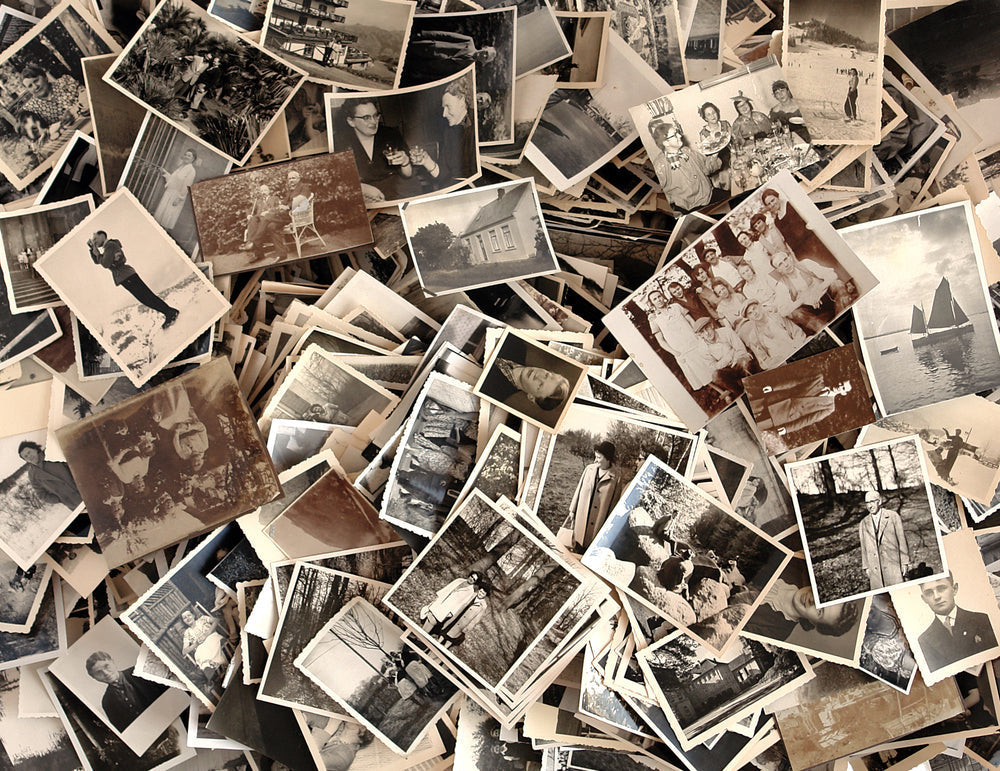
A Picture Speaks a Thousand Words
Share
- In this blog I want to talk to you about the power of photographs and the part they can play in revealing our ancestors.
You might be that rare person whose collection of family photographs is neatly organised with all the subjects identified. But the chances are that your photos are a bit of a jumble, are found in different locations in your home, and include some people that are literally strangers to you.
Bear in mind that only a couple of generations ago we hadn't been introduced to digital photography. I remember how enjoyable, but to be honest cumbersome, the process was. Using a chunky camera, buying film and flash bulbs, carefully removing the film from the camera to ensure that no light got into it and then handing it in to the chemist shop. A few days later and the processed photographs would be ready for collection. And then the disappointment when they hadn't turned out as well as I'd hoped!
Of course today we snap away with our smart phones, with the ability to delete until we get the effect we want, and then send our images instantaneously around the world. These images will be used by our descendants as they start researching their family history.
But let's look back again at our conventional photographs. How are you going to identify and organise them? Photographs will almost always provide you with clues that you can use to identify the subjects in them.
One of the first images we would recognise as a photograph was the daguerrotype which became publicly available in the 1840s. It was produced on a silver covered copper plate, without the use of a negative, so didn't allow for mass production.
The second half of the 19th century saw the introduction of the Carte -De-Visite, which was basically a photo mounted on card, approximately 4" x 2.5" so it resembled a visiting card. These were followed by larger cabinet cards which became very popular for several decades. They differed over time, for example with the type of card, colour and borders being quite time specific. However, it's probably wise not to be too rigid as there are many reasons why cards could be used out of their time period. And then came the Carte Postale, which was prevalent in the first quarter of the 20th century. This was very popular with the forces who would arrange to have their photograph taken and affixed to one side of a postcard. You could say that these were the first picture postcards. These are likely to be the types of photograph you possess, as well as the more modern photos that became prevalent during the 20th century.
So let's consider some different ways that we can identify the unknown people in our photographs.
- Do you see the name of a photographer or a photographic studio on the card. This can help to connect the photo to one or more people you have researched.
- Look at the style of clothing. Is it formal wear or working clothes? For women, hemlines, necklines and sleeve type have often been specific to particular decades. For the men, different styles of coat, jacket or suit can help place them in a particular time frame. Hairstyles and facial hair can indicate a particular time period.
- If you have military images, there are likely to be numerous clues to identification. Badges, in either metal or cloth, can appear in many places on a uniform for example the cap, collar, shoulder, arm or cuff. They can indicate a regiment, a ship, rank, specialist trade, gallantry award as well as overseas service chevrons and wound stripes. The uniform itself can often be placed in a fairly short time frame.
- Look closely at more up to date photographs. What is the style of furniture or the garden. Is there anything of interest in the background. Study them closely and you may be able to link them to people in your family tree.
- Make sure you protect the photographs by storing them in acid free polypropylene pockets. Where you do know the identity of the subject/s , write just a brief note eg their name and year of birth using a #2 pencil on the back.. Modern technology can help to repair damaged photographs or even colourise them. Google can also use facial recognition to see whether your image can be found elsewhere online.
- Happy Hunting!

1 comment
Very interesting, most of my images are well organised, I’ve moved a lot through my life and made a point to keep ‘memories’ protected. I also have my paternal Grandmother’s photographs, some from Kenya where she was a military wife to my Grandfather, some from early holidays in Ibiza when I was a young child. I also have one in particular she wrote on the back of that peaks my curiosity- she labelled it as a ‘best friend’- she’s in the picture next to another woman, they both look lovely. My grandma was very sociable but I never met her friends due to military lifestyle and age etc… it makes me wonder about her day to day experiences as a post-war military wife.
Thank you for or the article- I always enjoy following your work and your approach to it.